Yoga For Flexibility And Immunity: 10 Effective Poses To Try
The best asanas to open up your body and achieve a limber, fitter transformation.
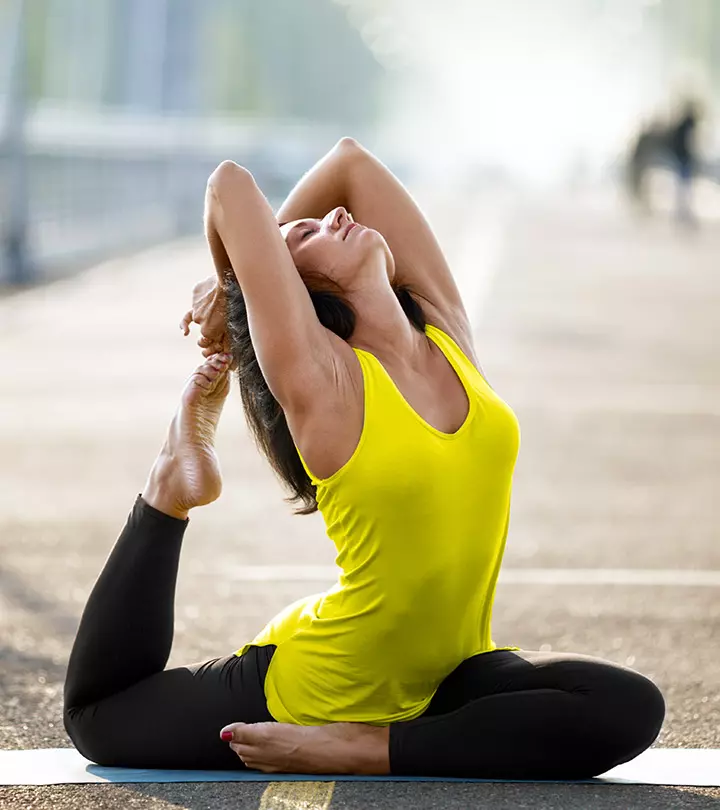
Image: Shutterstock
Try touching your feet with your hands without bending your knees. If you cannot do it, you need to work on your flexibility. So, how about trying yoga for flexibility? Yoga is the best way to keep your limbs, joints, and back flexible. It can also help you boost your immunity. But, which yoga poses should you try? In this article, we discuss the 10 effective poses that can improve your flexibility and immunity. Spare 15 minutes a day and see the results for yourself. Check them out!
In This Article
What Is Flexibility?
You know that your limbs might get jammed if you are sedentary. You’ve heard and probably said to yourself that you must work out or do some stretching to become flexible. But do you know what being flexible actually means?
Flexibility is also called limberness. It refers to a comprehensive range of movement or mobility in an individual joint, or in all of the joints. It also adds length to the muscles that cross the joints, and this induces the bending motion.
Flexibility is extremely essential simply because if our limbs and muscles don’t move in their full range of the movement, they sort of rust and give rise to a chain of issues, pain being one of the first signs.
Key Takeaways
- Yoga helps improve flexibility and boost immunity to help achieve a healthy body and mind.
- Yoga poses like tadasana and matsyasana can help improve your muscle strength and posture.
- You can include balasana in your workout routine to detox your body, improve digestion, and relax the body.
What Is Immunity?
Immunity is extremely essential to keep diseases and problems at bay.
It is simply the body’s capability to form a shield against harmful microorganisms so as to prevent them from entering the body. Immunity not only acts as a barrier against these organisms but also eliminates pathogens. It also has this innate ability to create pathogen-specific resistance.

How Does Yoga Help To Instill Flexibility And Boost Immunity?
A 2019 study conducted by a team of researchers from Husson University, US to understand the holistic benefits of yoga had 19 college athletes participating in an 8-week program. The graph below addresses the common beliefs the participants had about yoga and provides data on improved flexibility, awareness, and coordination as a result of the program as per the relevant sport.
Jen, a beauty enthusiast and blogger, discusses her positive relationship with yoga. She’s been practicing on and off, but while looking for ways to worry less and keep herself in the present, she decided to properly get into it, and states that online yoga videos have her hooked to practicing it daily now. She lists the various benefits that she derived from practicing yoga, including mental peace, self-compassion, strength, bliss, and relaxation. She further adds, “Not only am I getting stronger, but more flexible too! It is always so exciting when you find yourself comfortable(ish) in a pose that you couldn’t quite reach a few days before (i).”

Athlete's Most Common Beliefs About Yoga
Source: Athlete Perspectives on 8-Weeks of Yoga PracticeYoga, in Sanskrit, means to join or to focus. When one practices yoga regularly, one’s physical gains are strength, immunity, flexibility, and pliability (muscle suppleness). Yoga offers complete versatility for both mind and body fitness. It is an all-in-one package that includes muscular activity (that provides flexibility), and an inward self, energy, and breath awareness (that helps build immunity).
Yoga’s healing system is based on four basic principles.
- This practice believes that the human body is a holistic entity and comprises of interrelated dimensions that cannot be separated from each other. It also believes that the health or illness of one dimension directly affects the other aspects too.
- The second belief or principle is that all individuals are unique, and their needs are unique too. This must be acknowledged, and the practice must be tailored to suit one’s needs.
- The third principle states that yoga is self-empowering, and the students are their own healers. Yoga engages the student in the healing process of the body and plays an active role in their journey to health. The healing through yoga comes from within, and therefore, a sense of autonomy is established.
- The fourth principle is that the state of mind of the individual is crucial to the healing process. If a person practices with a positive mindset, the healing is quicker as compared to when the person practices with a negative mindset.
The meaning and principles behind yoga make it abundantly clear that this method works on both strength and immunity. It not only heals but also prevents diseases and disorders while prolonging the life of the limbs and the muscles.
Yoga For Immunity & Flexibility – All It Takes Is 15 Minutes
Before you begin your practice, make sure you have a cozy area to practice in. Lay down a yoga mat to keep yourself stable and secure. It is important to pay attention to how your body feels throughout the session. Make sure you never force yourself into positions that cause pain or discomfort. Yoga is meant to be a soothing experience, so focus on finding ease and relaxation in each pose. Creating a calm atmosphere will help you enjoy the benefits of your practice even more.
Have a look at these 10 effective yoga poses for immunity boost-up.
- Tadasana
- Utkatasana
- Virabhadrasana II
- Vrksasana
- Anjaneyasana
- Vasisthasana
- Setu Bandhasana
- Matsyasana
- Balasana
- Eka Pada Rajakapotasana
1. Tadasana (Mountain Pose)
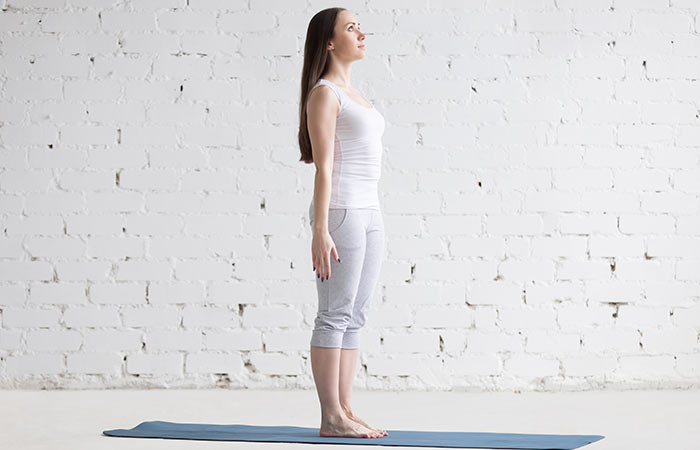
Though this asana seems incredibly simple at the outset, it requires a great deal of alignment to perfect it. It is important to get it right as this asana is the base for many other asanas that follow. This pose works on all your muscles as it corrects your posture and makes your body flexible and pain-free, especially if you have a sedentary desk job. This is one of the essential yoga asanas for beginners that aligns your skeleton and brings it back to a neutral stance. This asana also works on your nervous, digestive, and respiratory systems, making sure they are regulated and work well, thereby strengthening your immunity.
To know more about this asana, click here: Tadasana
2. Utkatasana (Chair Pose)

This asana is also called the Chair Pose, and it is both fierce and powerful as each and every part of your body is involved in it. It takes a great deal of strength and stamina to form an imaginary chair with your body. As you do this, you achieve a sense of stability and also fight the resistance of gravity. As you practice this asana regularly, you become stronger, more flexible, and more immune.
 Quick Tip
Quick Tip3. Virabhadrasana II (Warrior 2 Pose)
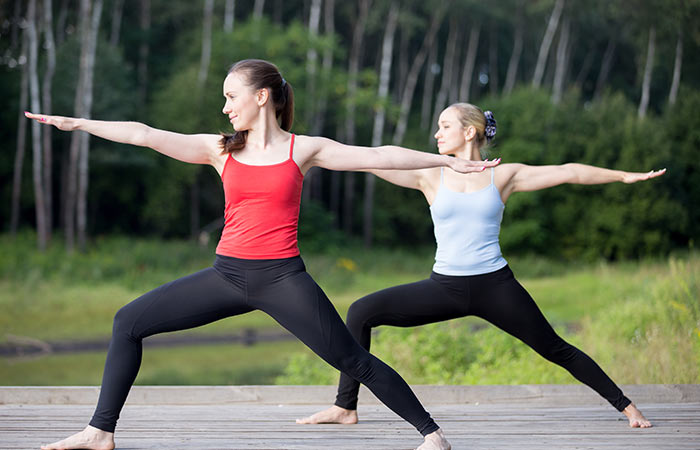
This asana is also called the Warrior II Pose. It requires focus and strength, and as your body strives to achieve it, it becomes both flexible and immune. This asana gives the legs a good stretch and also stretches the groins, lungs, chest, and shoulders. Regular practice of this asana also helps improve stamina.
4. Vrksasana (Tree Pose)
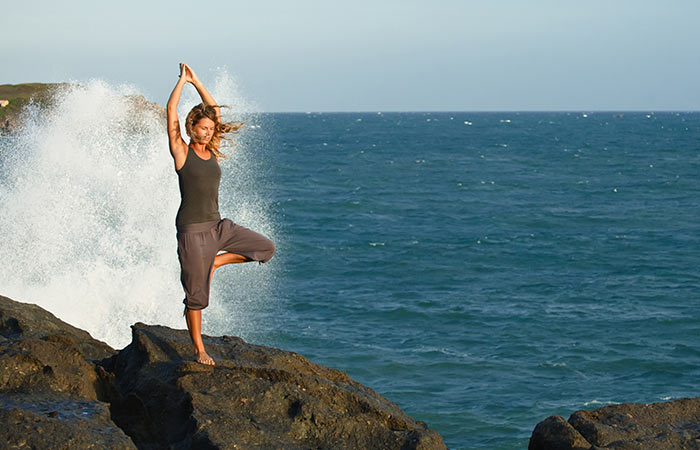
The Vrksasana or the Tree Pose strengthens the spine as it improves both poise and balance. Practicing this pose also aids neuromuscular coordination. Although this asana is more of a balancing pose, it aligns the body and prepares it for hardships. Eventually, with practice, flexibility and immunity are improved.
To know more about this asana, click here: Vrksasana
5. Anjaneyasana
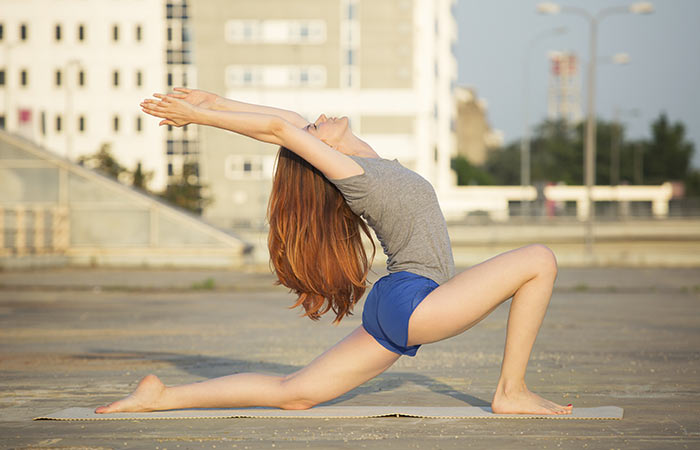
This asana allows full range of motion in the lower body as it gives the hamstrings, quadriceps, and groin a good stretch. The Anjaneyasana also opens up the chest, heart, and lungs. It is said to generate heat in the body, and thus, works amazingly well for those finding it hard to cope with cold weather. The opening up of the lungs throws out all the mucus, giving the lungs a good cleanse.
6. Vasisthasana (Side Plank Pose)
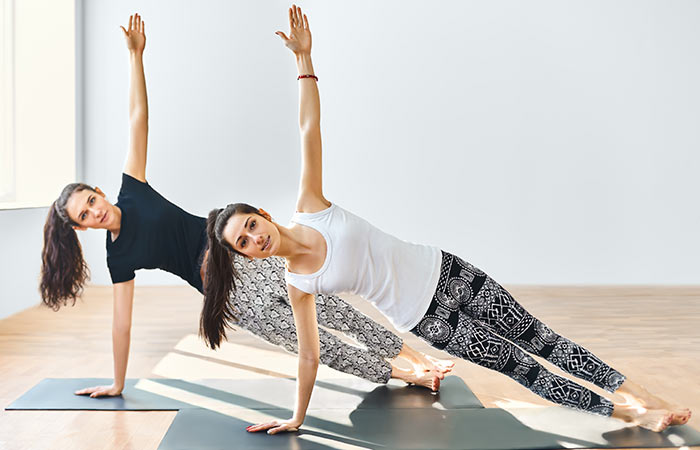
This asana gives the back of the legs and the wrists a good stretch. It works towards developing inner strength. It is important to correctly align your body when you practice the Plank Pose. Your muscles and organs get stimulated, and their functioning is improved.
 Quick Tip
Quick Tip7. Setu Bandhasana (Bridge Pose)
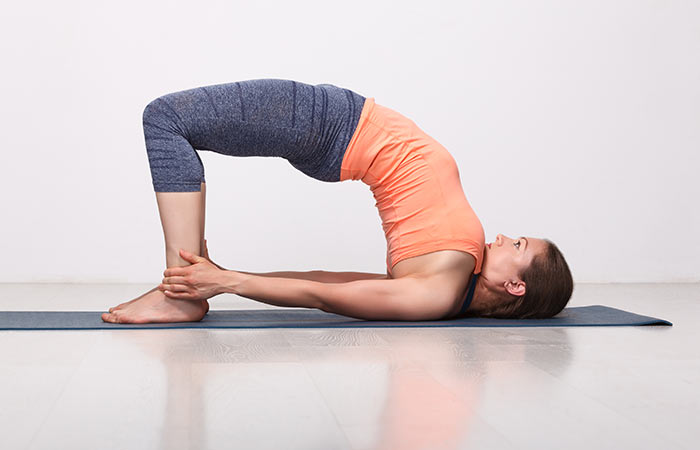
The Setu Bandhasana opens up the chest, heart, shoulders, the spine, the back of the neck, and the hip flexors. Also considered a mild inversion, in this asana, your heart is placed over your head. It, therefore, manages to give you all the benefits of an inversion. It provides relief from stress, fatigue, and insomnia, regulates blood pressure, and stimulates the thyroid glands. It also massages the knees and shoulders, thereby rejuvenating the practitioner.
8. Matsyasana (Fish pose)
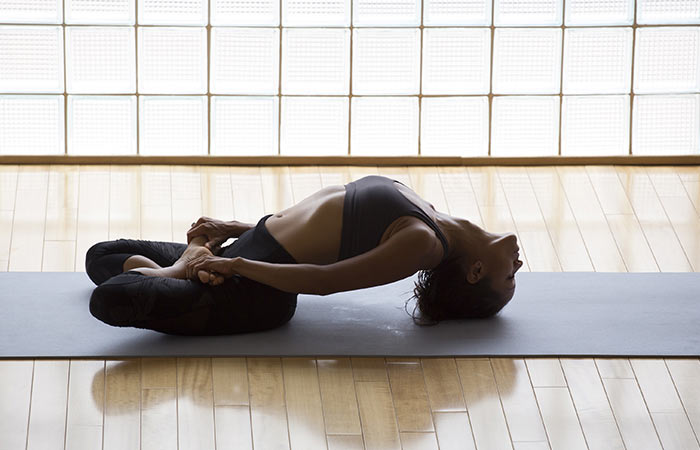
The Matsyasana or the Fish Pose strengthens the back and abdomen. It imparts a curve in the neck that is significantly advantageous to the thyroid. This asana roots you to the ground as it lifts up your spirits and rejuvenates you. This asana obviously induces flexibility to the spine, but it also improves immunity. They say that if you practice this asana regularly, you will never suffer from a stroke.
9. Balasana (Child Pose)
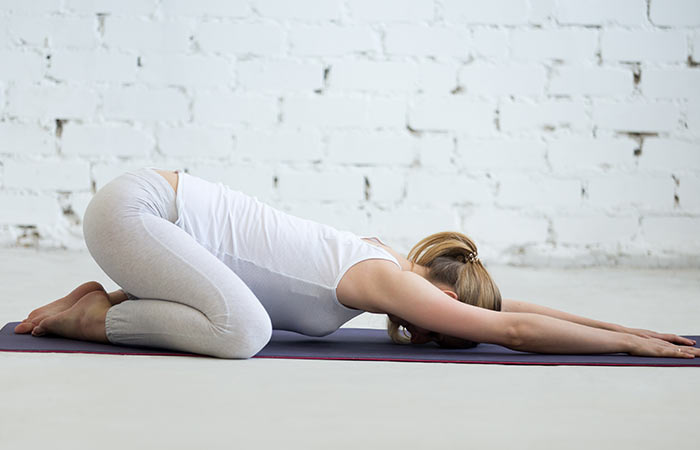
The Balasana is an effective pose in yoga to improve immunity. It tones the abdominal muscles, thus improving the process of elimination of waste as well as the procedure of digestion. It stretches your lower back and spine as it completely relaxes your body.
To know more about this asana, click here: Balasana
10. Pigeon Pose

The Pigeon pose, also known as Eka Pada Rajakapotasana, is a hip-opening yoga posture. It stretches your lower back, groin, and hip flexors that are commonly stiff due to prolonged sitting. This pose offers mobility and flexibility in the hip joints and may alleviate lower back pain. It also stimulates the abdominal muscles and aids digestion. It releases any tension and stress held in the hips. It also targets the glutes and piriformis muscles and stretches the tendons near the spine. However, avoid doing this asana if you have hip, back, or knee issues or if you experience any discomfort or pain while trying it.
Adding these yoga poses to your daily routine can greatly enhance your flexibility and boost your immune system. Try to dedicate at least 15 minutes a day to practice, and you will likely see and feel the benefits in both your body and mind over time. By making yoga a regular part of your life, you not only promote physical health but also support overall well-being and mental clarity.
Infographic: Top 5 Yoga Poses For Better Flexibility And Immunity
A sedentary lifestyle can lead to reduced flexibility and immunity, affecting your overall well-being. Thankfully, performing a few simple yoga poses each day can help you get back that lost control. While there are many poses to choose from, we have highlighted the 5 top yoga poses you should practice daily to improve your flexibility and immunity in the infographic below. Check it out!
Some thing wrong with infographic shortcode. please verify shortcode syntaxA sedentary lifestyle takes a toll on your flexibility in the body. Fortunately, the yoga poses listed above may help increase movement range and improve immunity and physical fitness. These, in turn, improve our power of adaptability. They also work on the posture, skeletal alignment, legs, wrists, knees, groins, shoulders, chest, lungs, hamstrings, quadriceps, spine, heart, neck, hip flexors, etc. Yoga for joint fluidity and flexibility also helps boost stamina, improve agility, relieve stress, reduce fatigue and insomnia, manage high blood pressure, etc. So, make it a point to spare yourself 15 minutes every day to improve your limberness and look extremely fit.
Frequently Asked Questions
What are some safety tips for practicing flexibility in yoga poses?
To stay safe while practicing flexibility in yoga poses, always warm up your muscles before starting. Use a yoga mat to prevent slipping and provide support. Pay attention to your body and avoid pushing yourself too hard to prevent injuries. Also, if you are a beginner, consider working with a certified instructor to ensure you are using the correct techniques.
How long does it take to improve flexibility with yoga?
It may take around 10 weeks to improve flexibility with yoga (1).
Is daily yoga enough exercise?
No. While it is good to do yoga daily, it may not be enough to stay fit. You must consume a balanced diet and follow a healthy lifestyle to improve your health.
Can yoga blocks or other props be used to assist with flexibility yoga poses?
Yes. Using them may also help achieve better pose and provide more comfort.
What is the hardest flexibility pose?
Taraksvasana or the Handstand Scorpion is the hardest flexibility pose. It requires extreme agility, balance, and flexibility.
At what age is it hard to be flexible?
It is hard to be flexible after 60 years of age as muscles tend to weaken with age, which hampers overall flexibility.
Is yoga safe for everyone?
Yes, it is a safe form of physical activity for people to practice and reap benefits in the long run.
What happens if we do yoga wrong?
It may lead to postural deformities and acute pain.
Can practicing yoga poses help alleviate stress or improve mental health?
Yes, yoga can help with overall improvement of mental, physical, and emotional well-being.
How can I track my progress with flexibility yoga poses?
You can use progress tracking applications or keep an account of your progress.
Illustration: Yoga Poses For Flexibility And Boosting Your Immunity
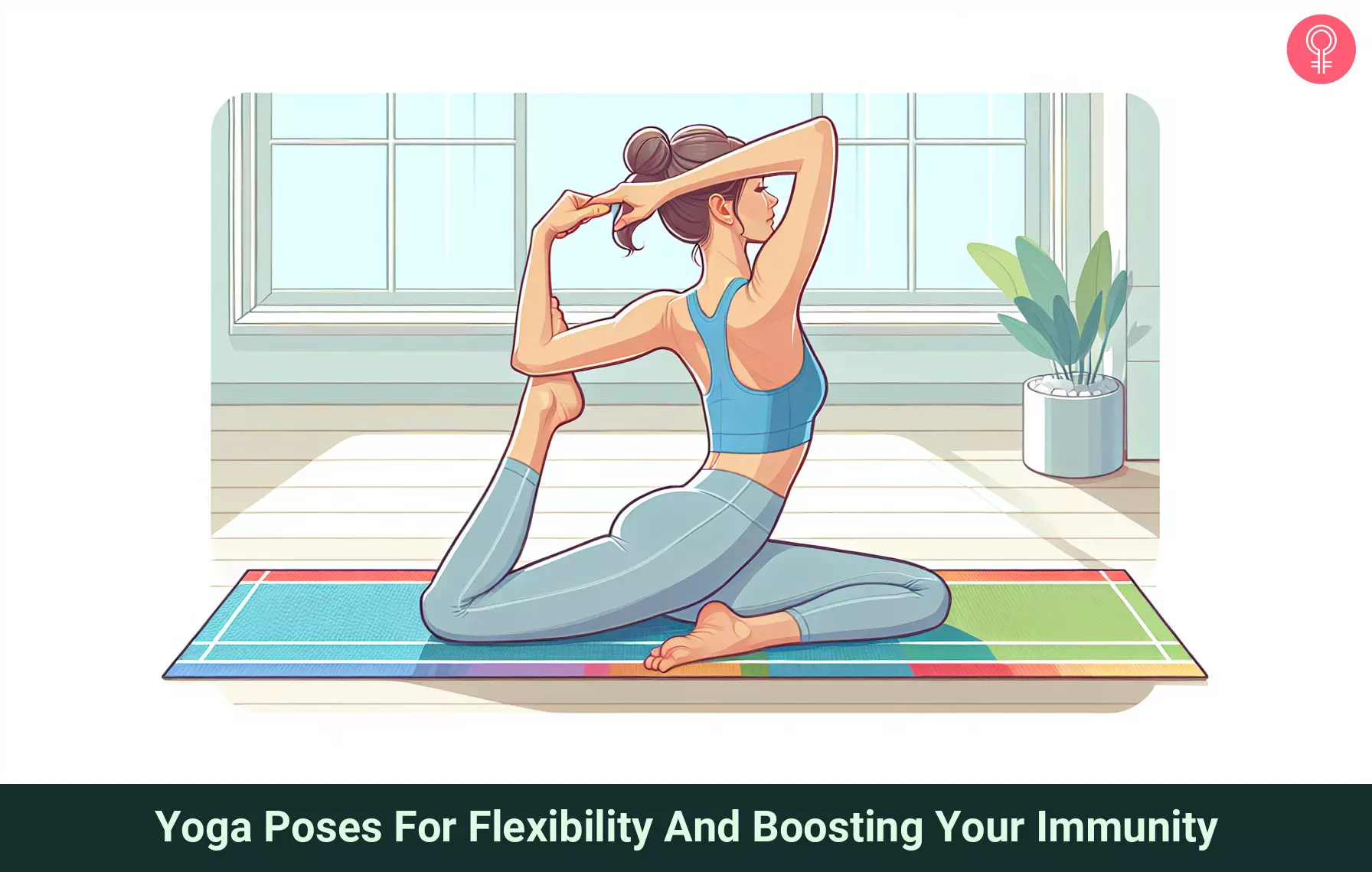
Image: Dall·E/StyleCraze Design Team
Start your day off right with this 20-minute yoga routine! Stretch and increase your flexibility with the easy-to-follow yoga session in the video below.
Personal Experience: Source
StyleCraze's articles are interwoven with authentic personal narratives that provide depth and resonance to our content. Below are the sources of the personal accounts referenced in this article.
i. Vibrant Health: In Love with Yogahttps://vibrantbeautyblog.blogspot.com/2015/04/vibrant-health-in-love-with-yoga.html
References
Articles on StyleCraze are backed by verified information from peer-reviewed and academic research papers, reputed organizations, research institutions, and medical associations to ensure accuracy and relevance. Read our editorial policy to learn more.
- Impact of 10-weeks of yoga practice on flexibility and balance of college athletes
https://www.ncbi.nlm.nih.gov/pmc/articles/PMC4728955/
Read full bio of Tatiana Sokolova
Read full bio of Shirin Mehdi
Read full bio of Arshiya Syeda
Read full bio of Moksha Gandhi







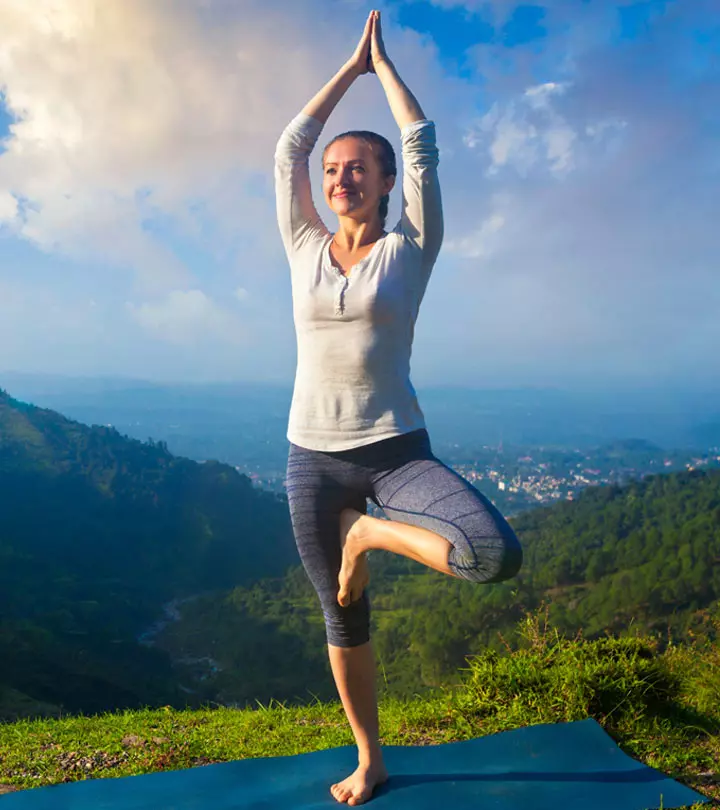
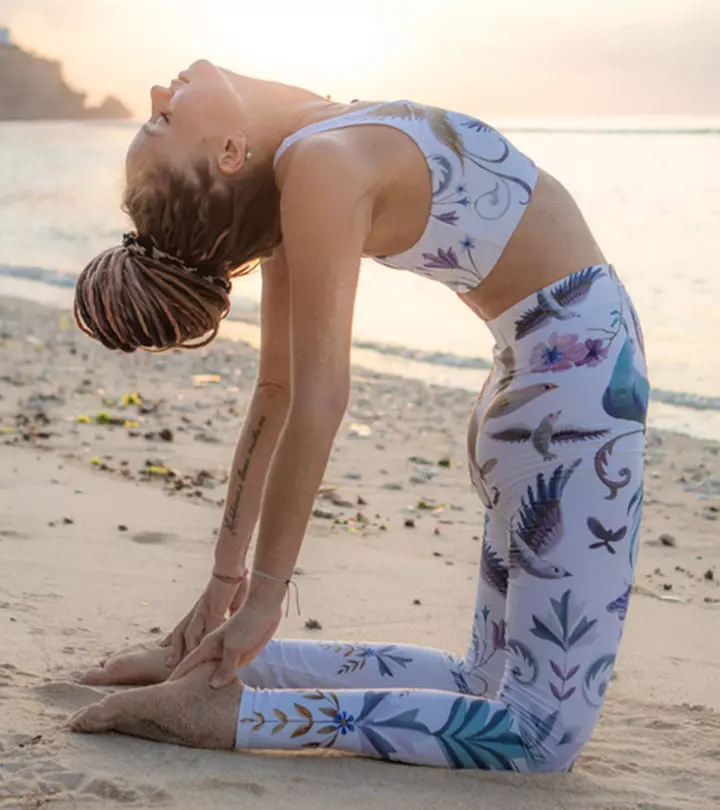


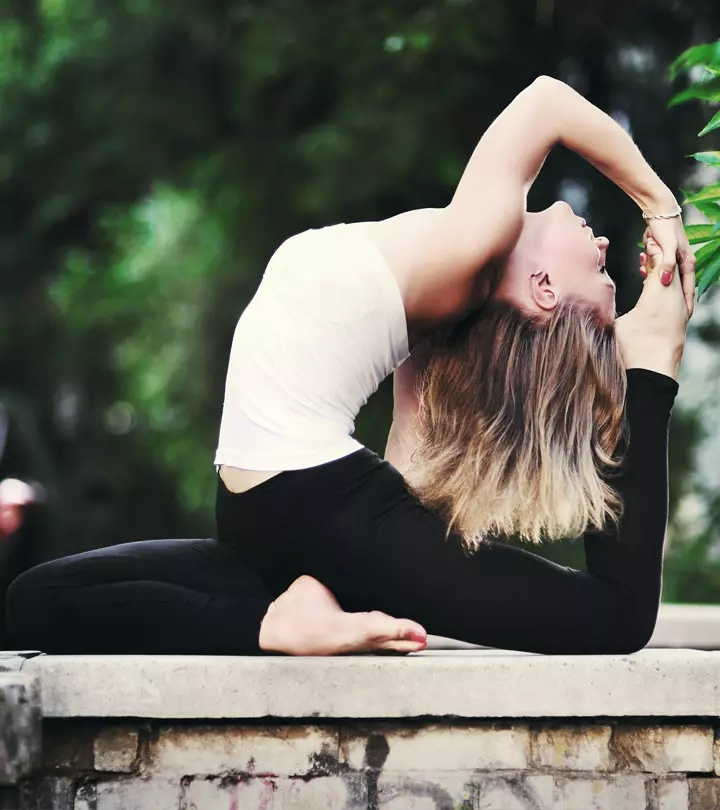
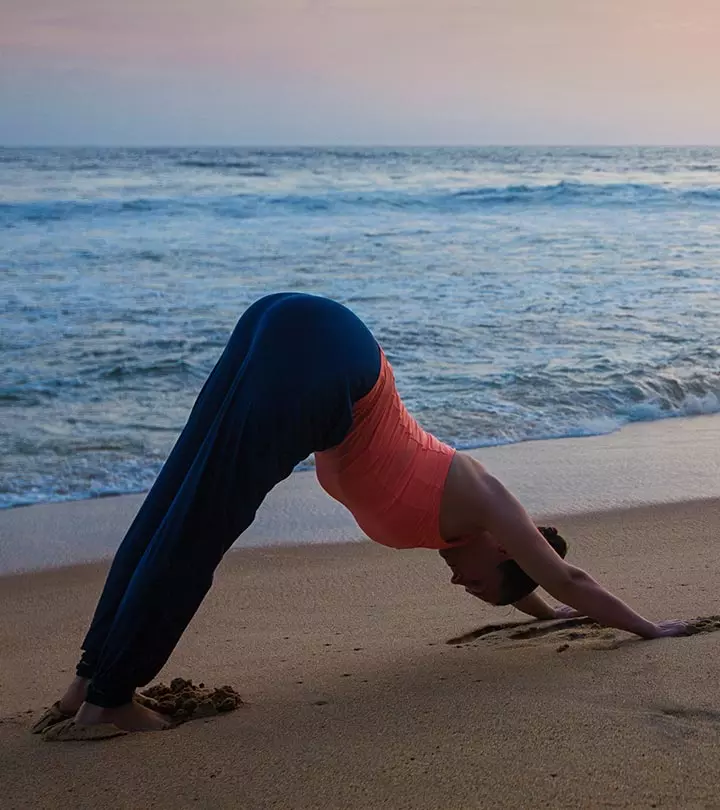
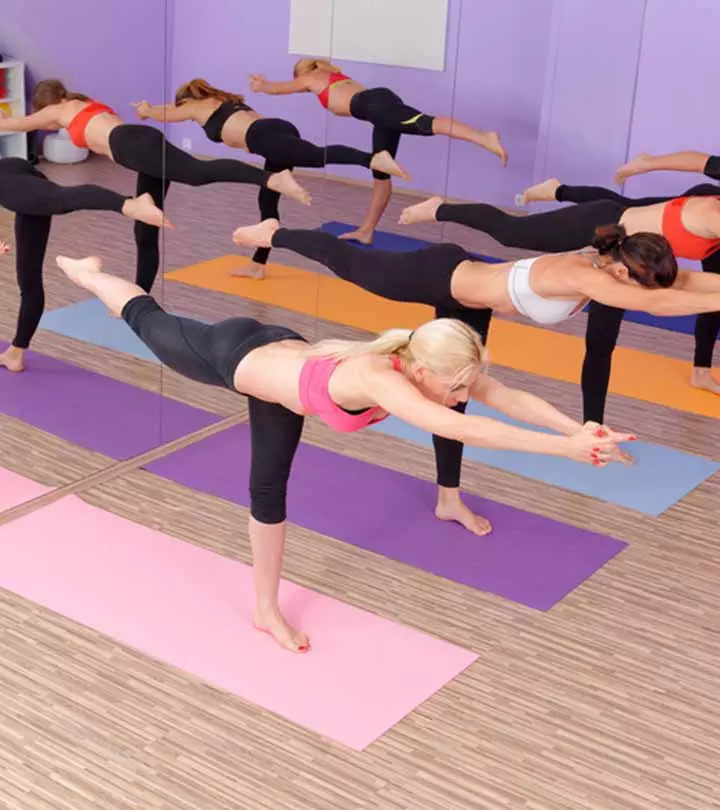
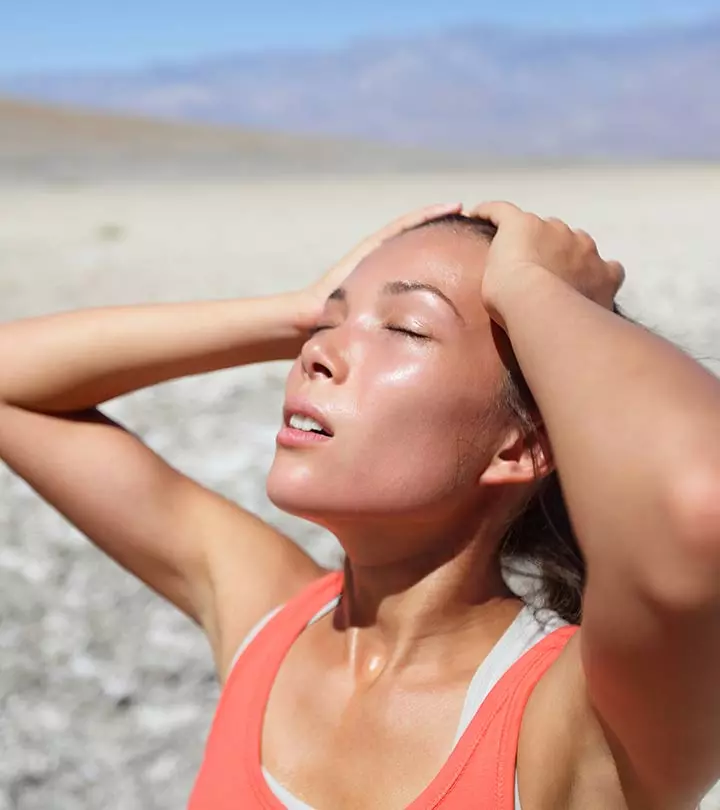
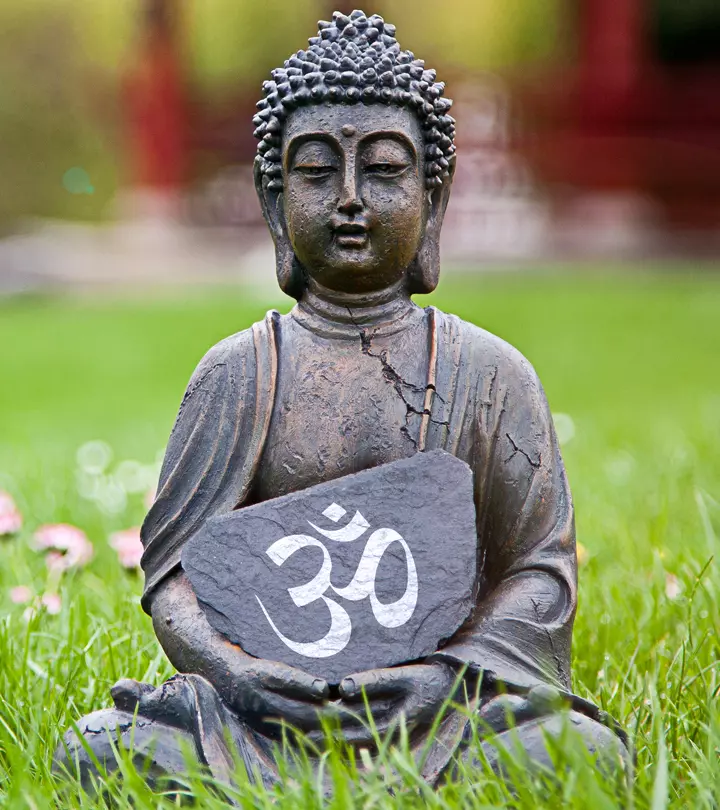
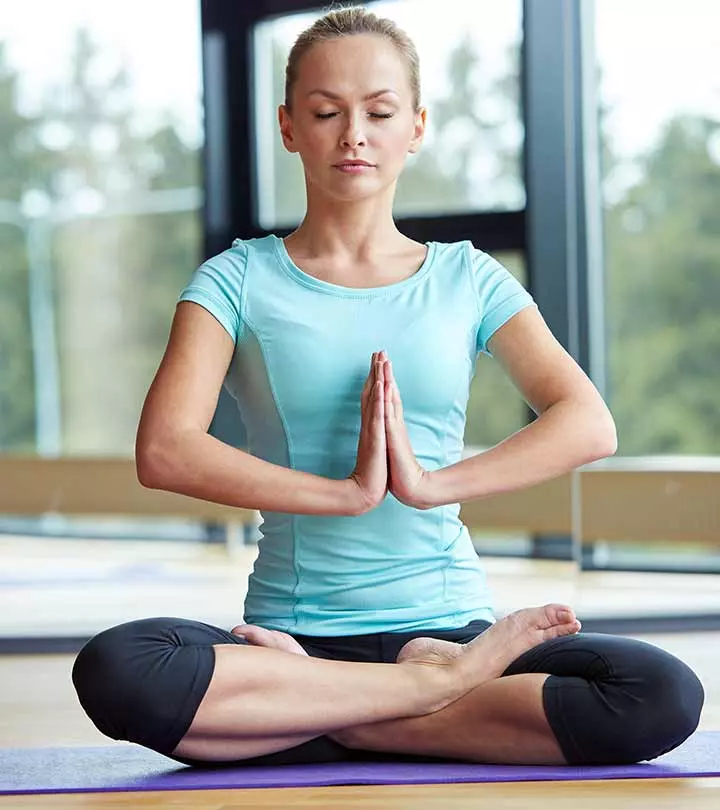
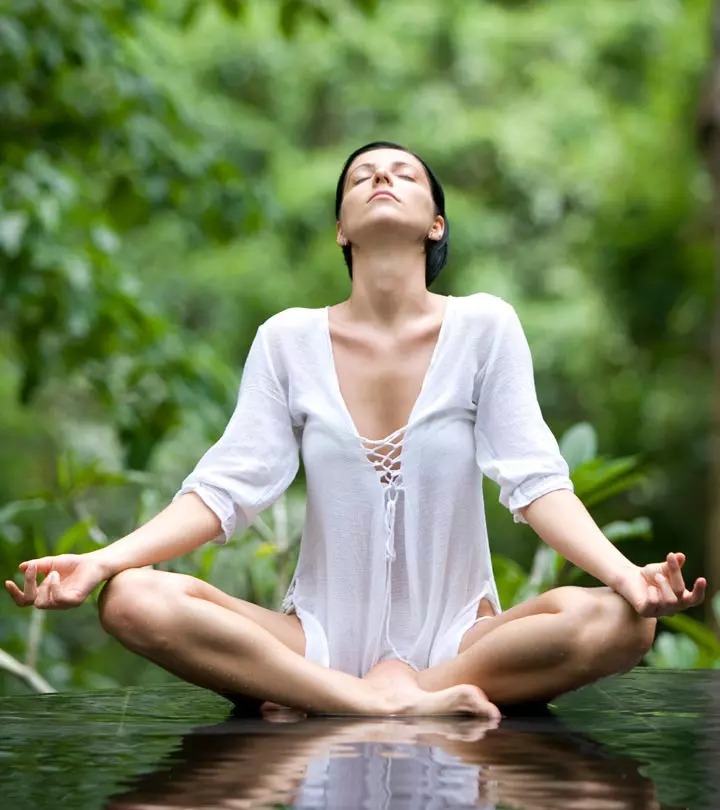

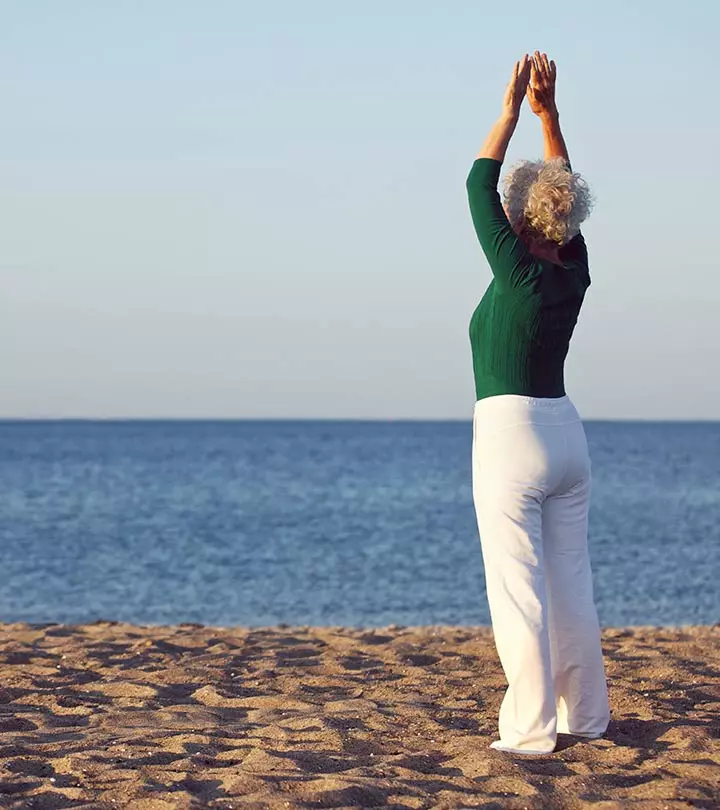
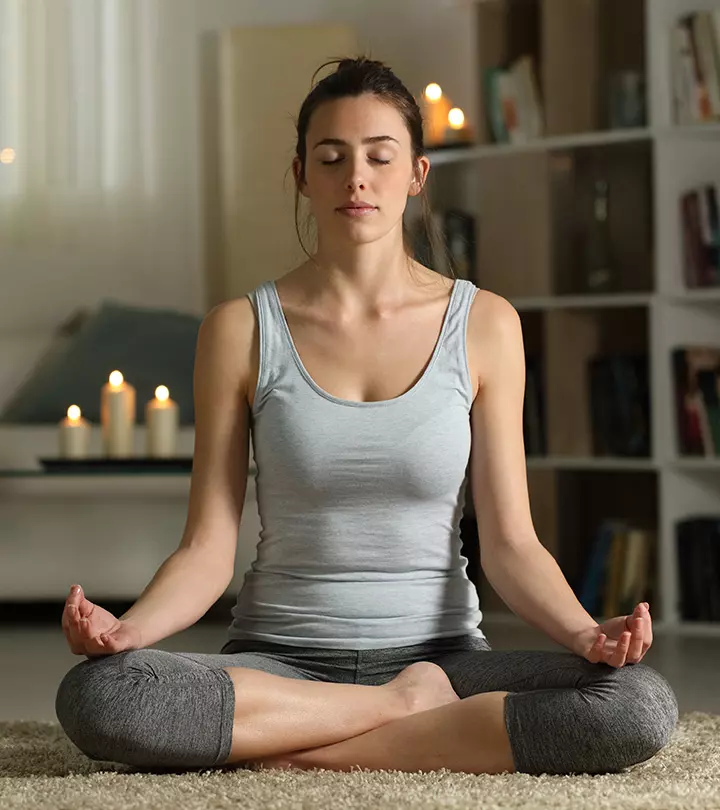
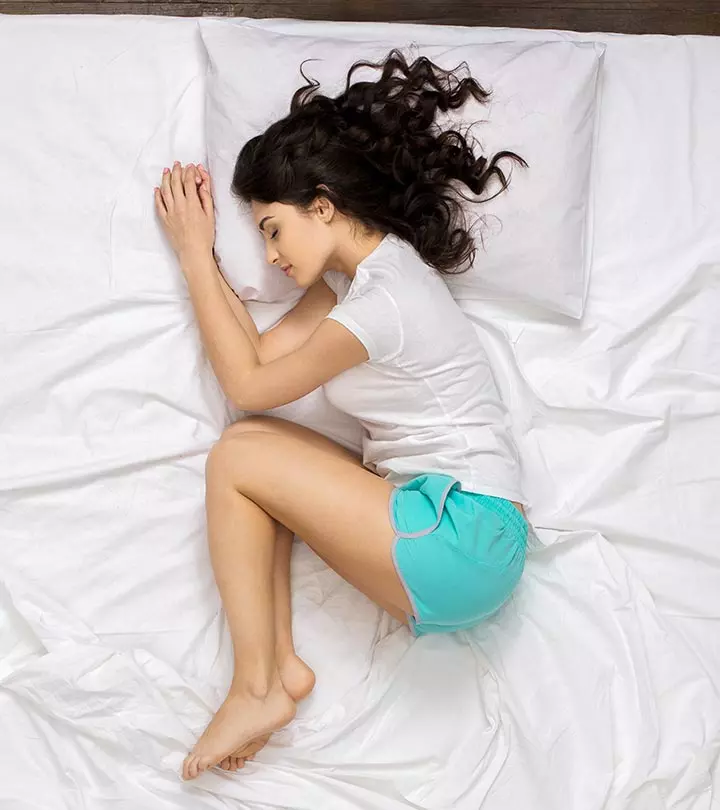

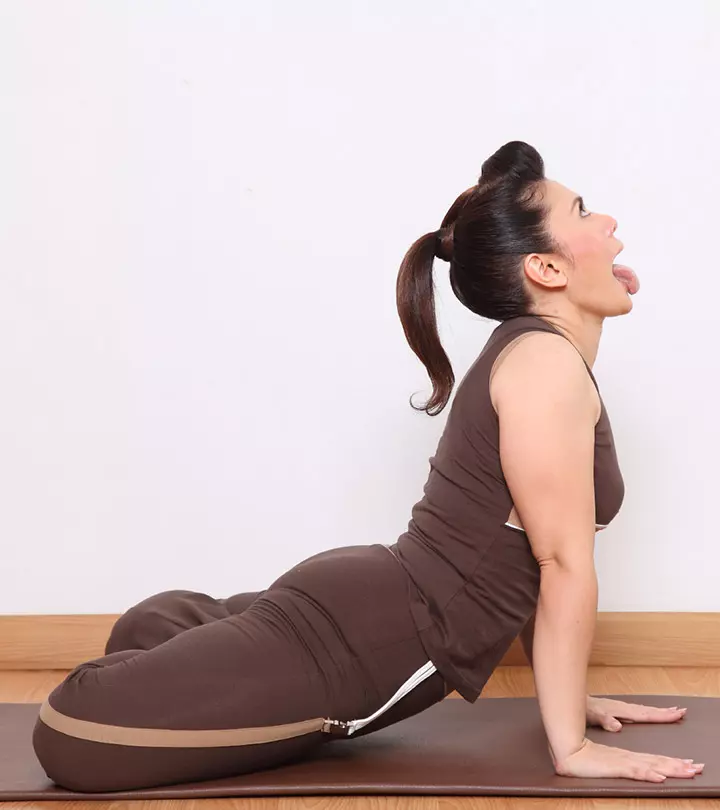


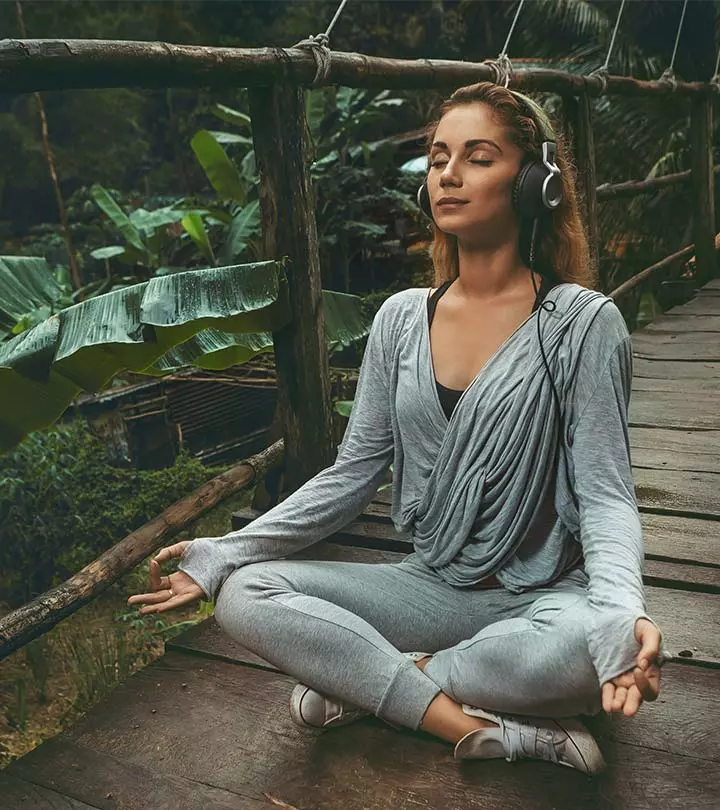
Community Experiences
Join the conversation and become a part of our empowering community! Share your stories, experiences, and insights to connect with other beauty, lifestyle, and health enthusiasts.